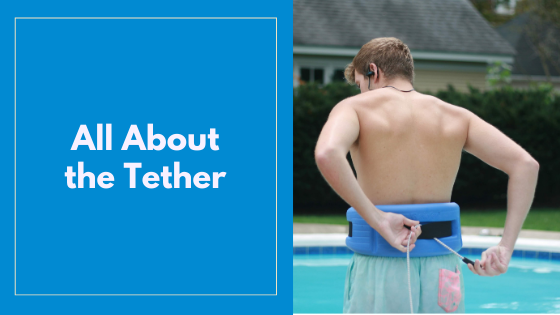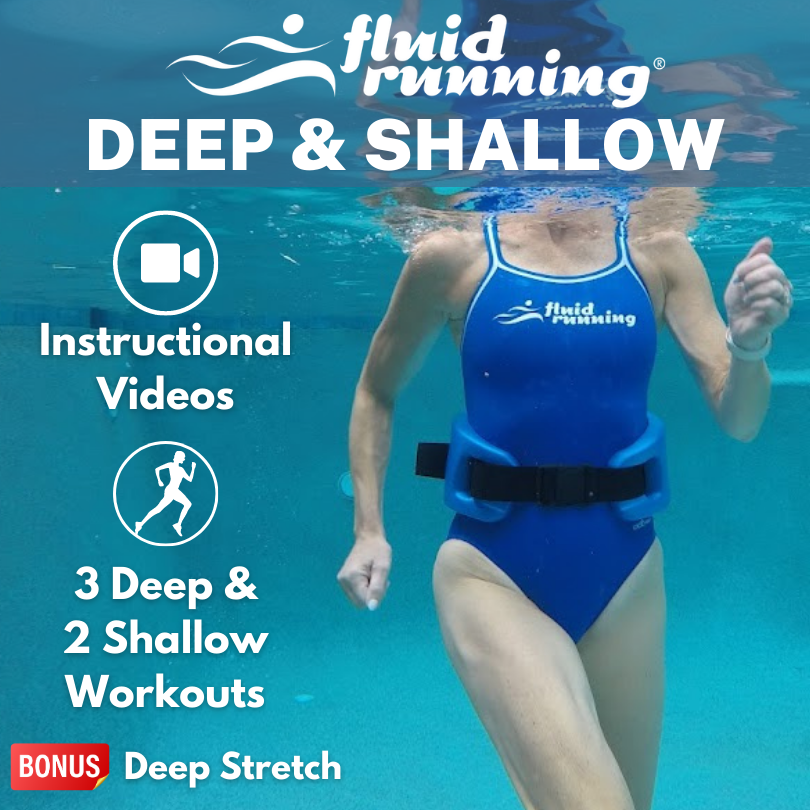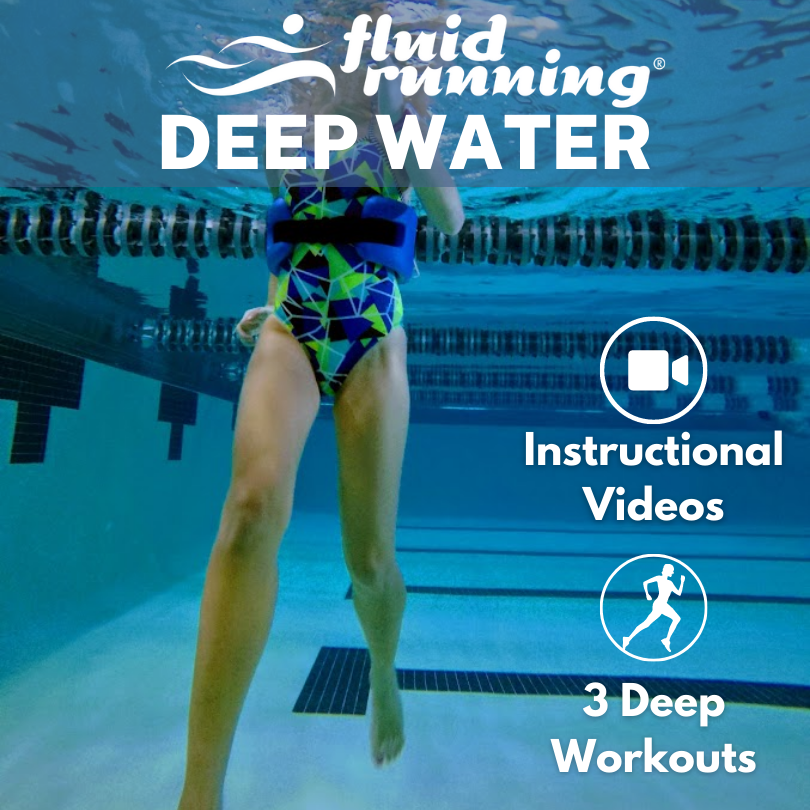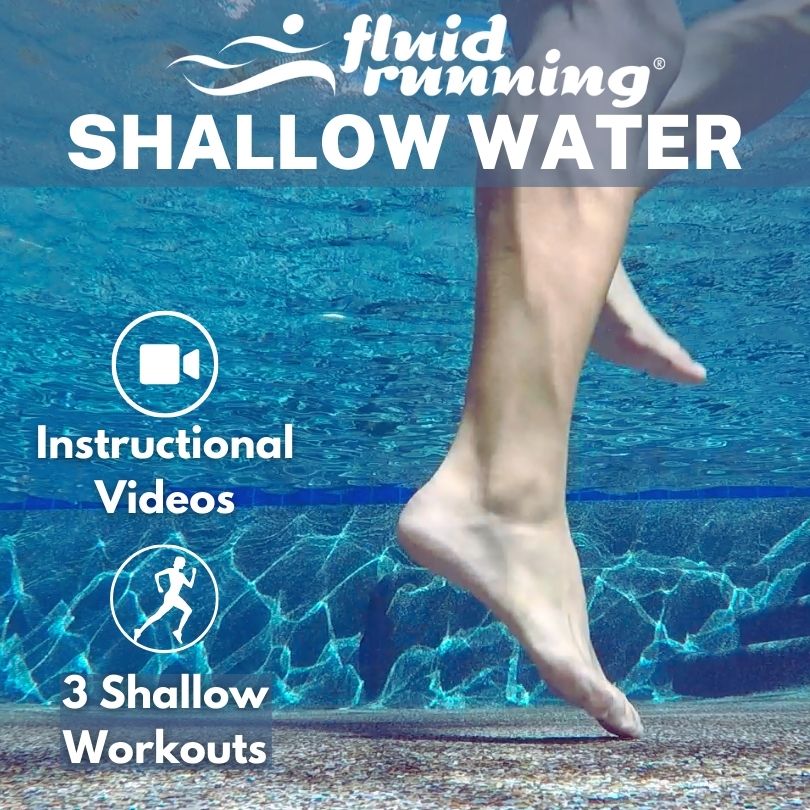We get a lot of questions about the tether for Fluid Running. How to use it, whether to use it and why to use it. These are all really good questions and ones we want to answer. This also applies if you are doing aqua jogging, or deep water running.
How to Use the Tether
Let’s start with how to use the tether and then move on to the other questions. The tether is meant to slip under the elastic strap on the back of your belt. Simply take one of the clips and thread it under the elastic band on the back of your belt and pull it through. If you are in a pool with lane lines, reach behind you to clip both ends of the tether onto a lane line forming a “V” behind you about 2.5 feet apart. The tension of the tether can be adjusted by widening the distance between the clips. In other words, if you make the V wider, the tension on the tether will be tighter. This is nice because it will keep you close to the lane line and allow you to share the lane with a swimmer.
Hooking up with a Tether
If you are in a pool without any lane lines, you can loop the tether around any stationary object such as the ladder or leg of a diving board and clip the two ends together. We generally don’t recommend making any form of slip knot or knot of any kind with the cord because the knot will tighten as you pull and will cause the elastic in your belt to wear down faster. If you are creating a “direct line” (vs. a “V”) between you and a ladder, for example, you might want to wrap the tether around the back of your belt and clip, then do the same with the other end.
Extending the Tether
You can also connect two tethers to make a longer cord if your stationary object is further away. (We have them on the Fluid Running website or you can find them on Amazon under aqua hitch.) You can also go back to the H2Go Instructional Video on your app or laptop to see how to set up the tether
What to do when you can’t Tether
So that takes care of how to use it, but we haven’t answered whether or why you should use it. The easiest answer to “whether” to use it is simple – the tether is completely optional. If you are Fluid Running in a pool or in the ocean or in a lake, and there is no good place to hitch the tether – don’t worry, you don’t need the tether! In fact, by not relying on the tether you are forced to really concentrate on your form (and engage your core) so that you aren’t traveling around in the water. Don’t worry, everyone travels a little but you can reduce how much you travel by focusing on your form. Traveling around in the pool happens for a variety of reasons, but understanding why will help you focus on correcting that.
- Pitching forward can cause you to move forward. Focus on keeping that upright position.
- Placing too much force on the back sweep part of the running stride can cause you to move forward. Focus on placing equal force on the back and forward sweep of your legs.
- Pushing your arms back with too much force can make you move forward if you aren’t bringing them forward with the same intensity.
- Grabbing the water with an open hand can also cause you to move forward. Keep a nice loose fist and be sure you’re swinging your arms by your side and not punching with them.
In Summary
If you haven’t tried Fluid Running without the tether, you might want to see how you do! On the other hand, the ability to tether has some nice advantages. A tether can help you keep that upright form and allows you to close your eyes and visualize running. It also gives you the opportunity to run against the resistance of the tether. You can lean forward (just a little while maintaining that tight core) as if you are running against a headwind.So that’s probably all you really ever needed (or wanted) to know about the tether. Feel free to use it if you are able. If not, know that there are some really good benefits that come as a result. Hope that helps!







